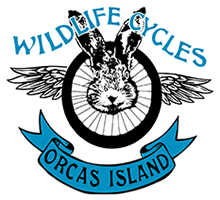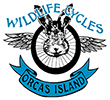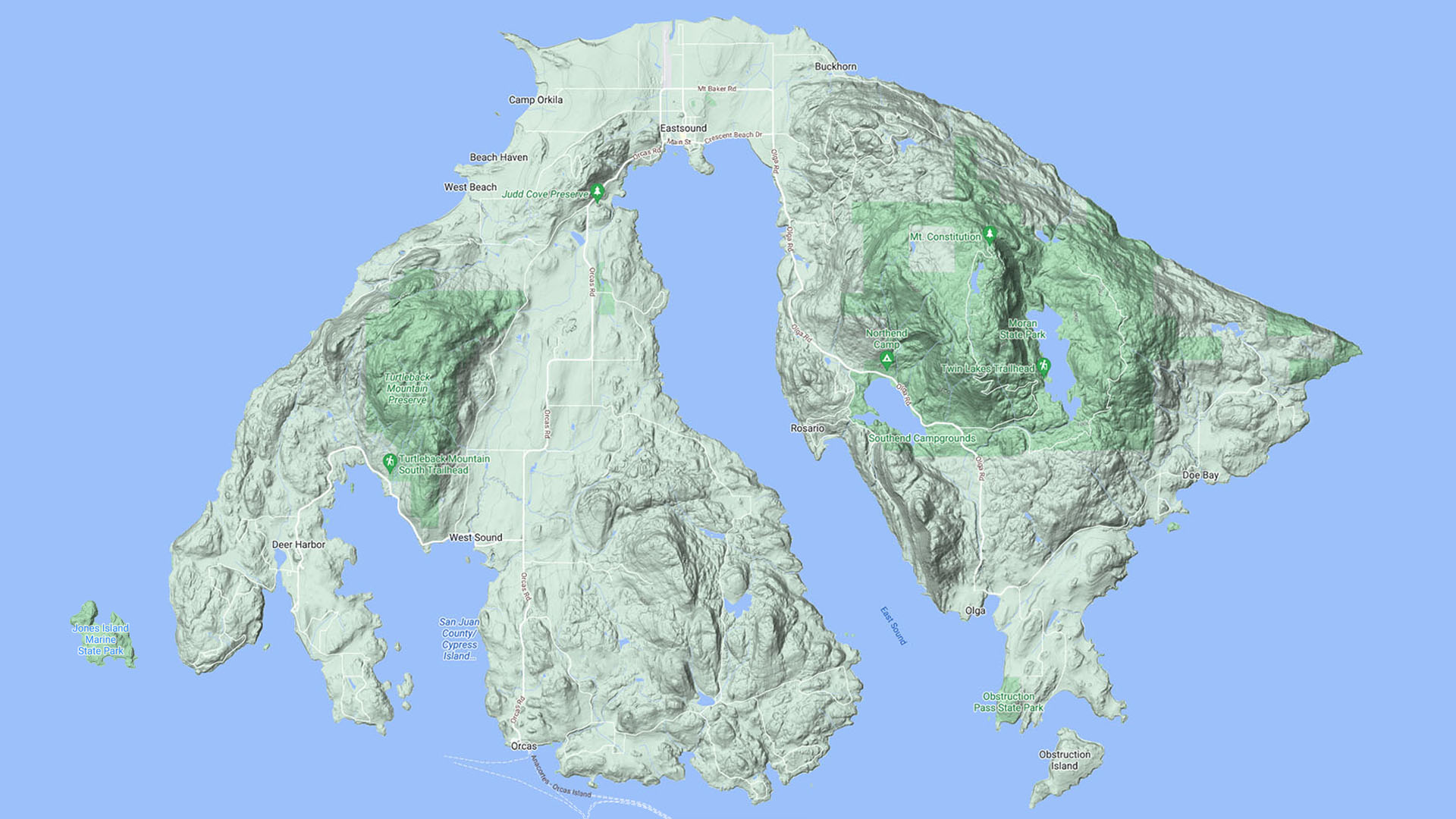Orcas Island Facts
Geography
Orcas is one of the San Juan Islands, located above the northern entrance to Puget Sound, about 85 air miles north of Seattle in Washington state. Nobody seems to agree on how many islands make up the archipelago, but approximately 175 points of land are significant enough to warrant names, and four – Orcas, San Juan, Lopez, and Shaw – stand out as the largest and most populous. Of these, Orcas is the traditionally popular vacation spot, although the others are well worth a visit.
Geographically, Orcas is also the largest of the islands, with a total area of 58 square miles. Its year-round population of 4,500 is scattered across the island, but the small community of Eastsound serves as a hub for commerce and civic life. From Memorial Day through Labor Day, vacationers and the summer-home crowd more than double the island’s population.
Orcas is a favorite Northwest destination for cyclists. More than 50 miles of public roadways loop through the orchards and valleys of the island’s interior, and scenic views from the shoreline lie at the end of almost every route. Washington’s state ferry system makes it easy for riders to get here, and the island offers plenty of opportunities for an active vacation.
The rugged terrain of Orcas makes it popular among cyclists who enjoy a challenging ride. Mount Constitution rises 2,409 feet above sea level, making it the highest point in the San Juans, and riders who tackle the steep road leading to the summit will be rewarded with stunning views of the San Juan Islands as well as the Gulf Islands in nearby British Columbia. Overall, you can’t ride far on Orcas without encountering some tough hills, but the lush rural scenery and towering fir trees make every trip worthwhile.
Weather
The climate in the San Juans is mild, with warm days throughout the summer. The temperature of the surrounding waters averages a cool 50 degrees fahrenheit (10 celsius) and exerts a moderating influence on the climate all year long. Summertime visitors will want to pack tanning lotion as well as a sweater for the cool evenings.
The San Juan Islands lie in a “rain shadow” between the mountains of Vancouver Island to the west and the Cascades to the east, so they receive much less precipitation than most parts of the Pacific Northwest. Rain is infrequent during the months of July and August, and most days are sunny, dry and warm. There are no guarantees, however, and anyone who tells you it never rains in the San Juans in the summertime hasn’t lived here long… so bring some wet-weather gear and hope you won’t need it!
September is often the most rewarding time to visit the islands. The days are cooler, but the weather usually remains bright and dry, and the peak vacation season is over.
During the late fall and early spring, the days are short and cool with frequent rainfall. If you don’t mind taking chances with the weather, though, the off-season is a great time to enjoy first-class accommodations at a bargain price.


